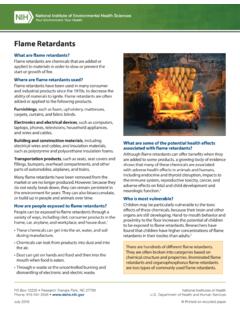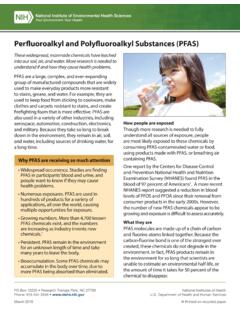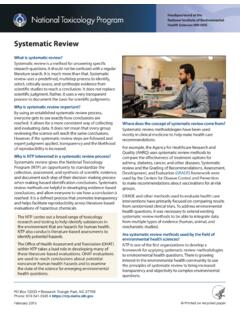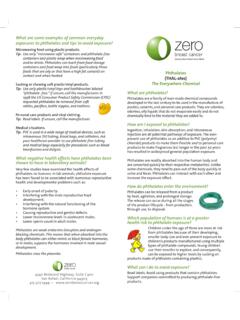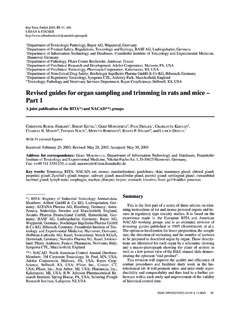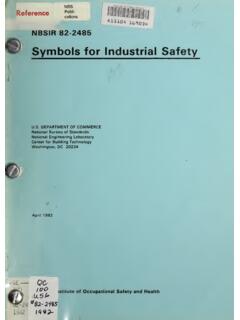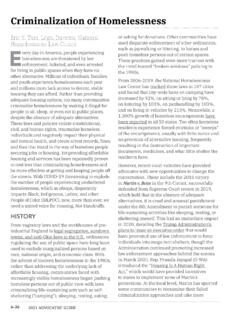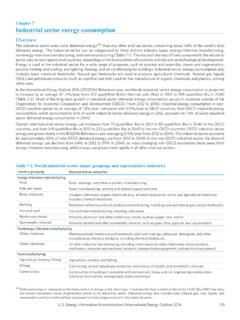Transcription of Endocrine Disruptors - National Institute of Environmental ...
1 Endocrine Disruptors and Your health Endocrine Disruptors are natural or human-made chemicals that may mimic or interfere with the body s hormones, known as the Endocrine system. Hormone-like chemicals had harmful efects on the organs and bodily functions of test animals, according to an independent panel of scientifc experts organized by the National Toxicology Program (NTP), which is located at The Endocrine Society stated in 2015 that Endocrine -disrupting chemicals may afect health and disease in How do we encounter these chemicals? Endocrine Disruptors are found in everyday products, including some food and beverage packaging, cosmetics, toys, fame retardants, and pesticides. Your contact with these chemicals may occur through diet, air, skin, and water. Chemicals that may disrupt your Endocrine system Bisphenol A (BPA) is used to make polycarbonate plastics and epoxy resins found in many plastic products, including food storage containers.
2 Dioxins are a byproduct of some manufacturing processes, such as herbicide production and paper bleaching, and are released into the air from waste burning and wildfres. PFAS (per- and polyfuoroalkyl substances) are a large group of chemicals used widely in industrial applications, such as frefghting foam, nonstick pans, paper, and textile coatings. Phthalates are used to make plastics more fexible; they are found in some food packaging, cosmetics, fragrances, children s toys, and medical devices. Phytoestrogens are naturally occurring substances in plants that have hormone-like activity, such as genistein and daidzein in soy products like tofu and soy milk. Polybrominated diphenyl ethers (PBDE) are used to make fame retardants for products such as furniture foam and carpet. Polychlorinated biphenyls (PCBs) are used to make electrical equipment, such as transformers, and are in hydraulic fuids, heat transfer fuids, lubricants, and plasticizers.
3 What is NIEHS doing? NIEHS-supported research leads to a greater understanding of how Endocrine -disrupting chemicals may harm health and cause disease. NIEHS contributed to a 2019 consensus statement that gives scientists a framework for evaluating potential Endocrine The framework is a descriptive list of 10 key characteristics of Endocrine disruption. The characteristics pinpoint common ways in which hormones function and how chemicals can interfere. This approach to Endocrine -disruptor research is a breakthrough in understanding how chemicals produce toxic efects. Endocrine -disruptor research concerns health problems related to: Reproduction Cancers Thyroid Obesity and metabolism Neurodevelopment Related research includes: Developing new models and tools to better understand how Endocrine Disruptors work. Improving ways to identify Endocrine -disrupting substances.
4 Understanding linkages between exposure to Endocrine Disruptors and health efects. Identifying and forming strategies to reduce or prevent exposures. PO Box 12233 Research Triangle Park, NC 27709 National Institutes of health Phone: 919-541-3345 Department of health and Human Services May 2020 Printed on recycled paper National Institute of Environmental health sciences NTP evaluates Endocrine Disruptors including pesticides; perfuorinated chemicals, compounds that may replace BPA in the marketplace; and components of fame retardants for how they may afect body tissues, such as breast, uterus, fat cells, male reproductive tract, and liver. In addition, they conduct laboratory studies to prioritize Endocrine -disrupting chemicals for toxicity testing. Through NTP, NIEHS participates in Tox21, a multi-agency program that is developing and applying new models and tools using robotics to predict Endocrine -disrupting activity for Environmental substances.
5 What have NIEHS and NTP discovered? Recent NIEHS-supported research shows links between Endocrine -disrupting chemicals and the ways in which well-being may be harmed, for example: Attention. The drug diethylstilbestrol (DES) may be linked to an increased chance of attention defcit hyperactivity disorder (ADHD) in grandchildren of women who used it during Immunity. Children exposed to high levels of PFAS had a diminished immune response to Metabolism. Long-term exposure to arsenic can disrupt metabolism, increasing the risk of diabetes and other metabolic Puberty. Chemicals in lavender oil and tea tree oil were associated with premature breast development in girls,7 and abnormal breast development in Reproduction. DES can alter the way genes are turned on and of in reproductive organs of mice, potentially afecting fertility and For more information on the Join a clinical study and help NIEHS make scientifc National Institute of Environmental health sciences , discoveries.
6 The Body Weight and Puberty Study is go to recruiting. Email to learn more. 1 Melnick R, et al. 2002. Summary of the National Toxicology Program s report of the Endocrine Disruptors low-dose peer review. Environ health Perspect. 110(4):427-31. 2 Gore AC, et al. 2015. EDC-2: The Endocrine Society's Second Scientifc Statement on Endocrine -Disrupting Chemicals. Endocr Rev. 36(6): E1 E150. 3 La Merrill MA, et al. 2019. Consensus on the key characteristics of Endocrine -disrupting chemicals as a basis for hazard identifcation. Nat Rev Endocrinol. doi: [Online 12 Feb 2020] 4 Kioumourtzoglou MA, et al. 2018. Association of exposure to diethylstilbestrol during pregnancy with multigenerational neurodevelopmental defcits. JAMA Pediatr 172(7):670 677. 5 Grandjean P, et al. 2017. Estimated exposures to perfuorinated compounds in infancy predict attenuated vaccine antibody concentrations at age 5-years.
7 J Immunotoxicol. (1): 188 195. 6 Martin EM, et al. 2017. Genetic and epigenetic mechanisms underlying arsenic-associated diabetes mellitus: a perspective of the current evidence. Epigenomics. 9(5): 701 710. 7 Ramsey JT, et al. 2019. Lavender products associated with premature thelarche and prepubertal gynecomastia: case reports and Endocrine -disrupting chemical activities. J Clin Endocrinol Metab. 104(11):5393-5405. 8 Henley DV, et al. 2007. Prepubertal gynecomastia linked to lavender and tea tree oils. N Engl J Med 356(5):479 85. 9 Li Y, et al. 2018. DNA methylation and transcriptome aberrations mediated by ER in mouse seminal vesicles following developmental DES exposure. Proc Natl Acad Sci U S A. doi: PMID:29666266
